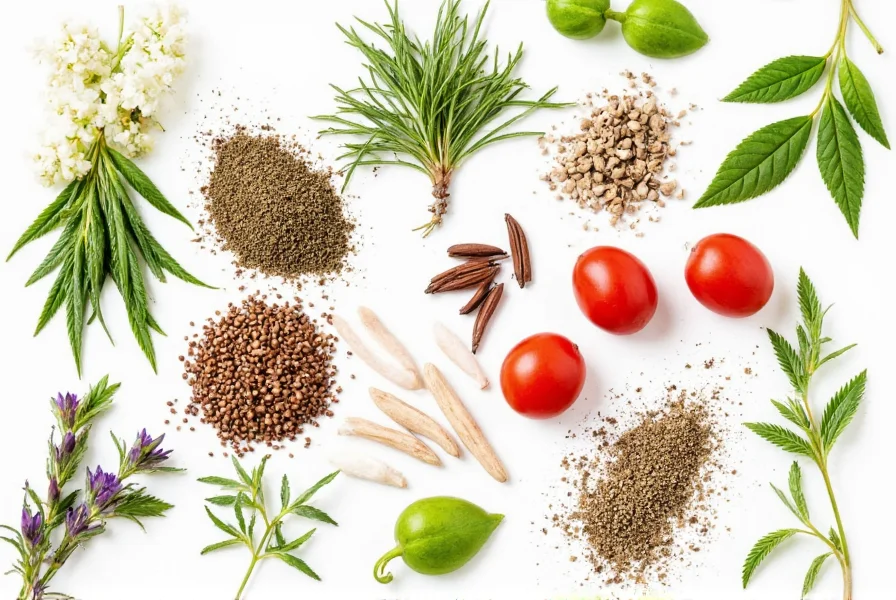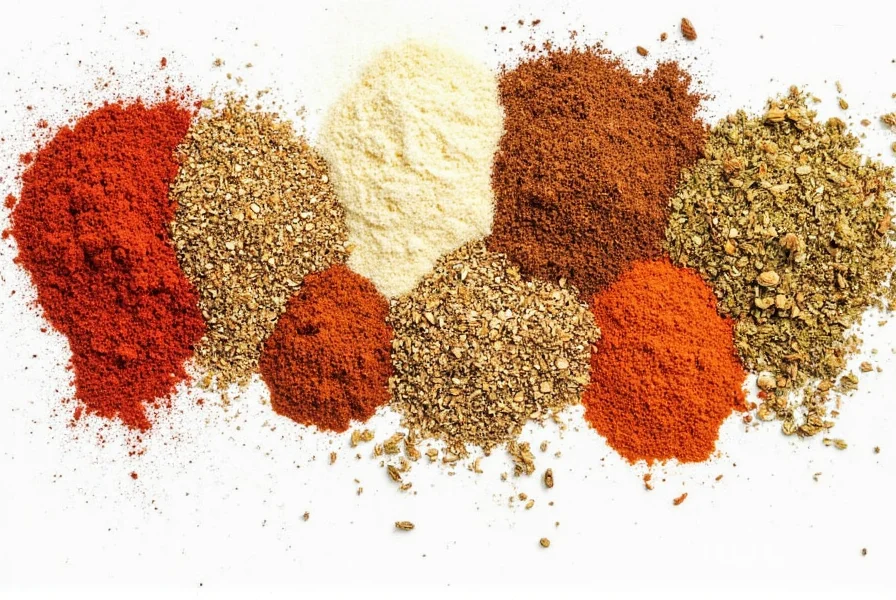Italian Spices List: 10 Must-Have Herbs and Spices for Authentic Italian Cooking
When you think of Italy, what comes to mind? Rolling vineyards, rustic pasta dishes, crusty bread, and that irresistible aroma wafting from a cozy kitchen. If you’ve ever wondered how Italian food tastes so good every single time, the secret often lies in the spice drawer.
In this guide, we’ll walk through an essential Italian spices list — a must-have lineup that transforms your home cooking into something truly Mediterranean. Whether you’re an amateur chef or a seasoned pro, you’ll find something here to spice up your culinary repertoire (pun absolutely intended).
Table of Contents
- Introduction to Italian Spices
- Top 10 Italian Spices You Need in Your Pantry
- How to Use Italian Spices Like a Pro
- Buying Guide: What to Look For When Buying Italian Spices
- Classic Italian Spice Blends Worth Trying
- Storage Tips for Maximum Flavor
- Conclusion
Introduction to Italian Spices
Italian cuisine may not be known for its fiery heat like Mexican or Indian dishes, but it’s deeply aromatic and full of flavor thanks to a thoughtful use of herbs and spices. From fresh basil on a margherita pizza to the earthy scent of rosemary on roasted lamb, Italian cooking is all about simplicity and balance — and the right spice makes all the difference.
Unlike other global cuisines where spices are used aggressively, Italian flavors rely more on freshness and harmony. The best Italian spice blends and herbs are used to enhance, not overpower, the natural ingredients in a dish.
Top 10 Italian Spices You Need in Your Pantry
Let’s dive into the essential Italian spices list — your ultimate roadmap to authentic Italian flavor at home. Here are the top 10 herbs and spices every Italian-inspired cook should have on hand:
| Spice | Flavor Profile | Best Used In | Substitutes |
|---|---|---|---|
| Basil | Sweet, peppery, slightly minty | Pesto, pasta sauces, Caprese salad | Oregano (dried), tarragon |
| Oregano | Earthy, warm, slightly bitter | Pizza, tomato-based sauces, grilled meats | Marjoram, thyme |
| Rosemary | Pine-like, woody, fragrant | Roasts, focaccia, potatoes | Thyme, sage |
| Thyme | Subtle, earthy, citrusy hint | Stews, soups, braised dishes | Oregano, marjoram |
| Mint | Cool, refreshing, sweet | Desserts, drinks, Middle Eastern-inspired Italian dishes | Basil, spearmint |
| Fennel Seeds | Licorice-like, slightly sweet | Sausages, breads, seafood dishes | Anise seeds, dill seeds |
| Parsley | Grassy, fresh, slightly peppery | Garnish, gremolata, herb sauces | Cilantro (if mild), chervil |
| Garlic Powder | Umami-rich, savory | Meat rubs, sauces, dressings | Minced garlic, onion powder |
| Red Pepper Flakes | Spicy, sharp, earthy heat | Pasta sauces, pizza, chili oils | Cayenne pepper, crushed chili |
| Bay Leaves | Woody, floral, herbal | Stocks, stews, braises | Oregano leaves, thyme sprigs |

How to Use Italian Spices Like a Pro
Now that you’ve got your Italian spices list handy, let’s talk technique. Using these herbs and spices correctly can make the difference between okay food and unforgettable meals. Here are some tips to keep in mind:
- Fresh vs. Dried: Fresh herbs like basil and parsley should be added toward the end of cooking to preserve their delicate flavors. Dried herbs such as oregano and rosemary work better when added early so they can bloom in the oil or simmering liquid.
- Toasting Spices: Fennel seeds and red pepper flakes benefit from a quick toast in a dry pan before adding them to dishes. This enhances their aromas and brings out deeper flavors.
- Pairing with Olive Oil: Many Italian herbs release their full flavor when combined with high-quality olive oil. Try making a simple herb-infused oil with rosemary or thyme for drizzling over bread or vegetables.
- Layering Flavors: Don’t just sprinkle everything in at once. Layer herbs throughout the cooking process for depth. Start with garlic and dried herbs, then finish with fresh ones.
- Use Salt Wisely: Some pre-made spice blends contain salt. Taste before salting your dish to avoid oversalting.
Buying Guide: What to Look For When Buying Italian Spices
Buying quality spices is half the battle. With so many options on the market, how do you choose? Here’s your insider buying guide for Italian spices:
- Source Matters: Choose spices that are grown and harvested in Italy or regions known for quality, like California (for basil) or Greece (for oregano). Terroir affects flavor significantly.
- Whole vs. Ground: Whole spices like fennel seeds and bay leaves tend to stay fresher longer. Grind them yourself using a mortar and pestle or spice grinder for maximum potency.
- Look for Aromatic Strength: When you open a jar, you should smell it immediately. If it doesn’t pack a punch, it’s probably old and lacks flavor.
- Avoid Fillers: Read labels! Some spice mixes include anti-caking agents or unnecessary additives. Stick with pure spices whenever possible.
- Packaging: Store spices in dark glass jars or metal tins to protect them from light and moisture. Transparent plastic containers expose spices to UV degradation.
| Product Type | Recommended Brands | Features | Best For |
|---|---|---|---|
| Dried Basil | Spice Islands, Simply Organic | Non-irradiated, air-dried, no preservatives | Pesto, sauces, bruschetta |
| Oregano | McCormick Culinary, La Flor | Strong aroma, dark green color | Pizza, marinades, soups |
| Fennel Seeds | Burlap & Barrel, Simply Organic | Whole, non-GMO, fair trade | Sausage seasoning, bread, fish dishes |
| Italian Herb Blend | Penzeys, Badia | Basil, oregano, rosemary, thyme blend | All-purpose seasoning for pastas, roasts, salads |
| Crushed Red Pepper | La Costeña, McCormick | Natural color, spicy kick | Pizza, pasta aglio e olio, chili oil |

Classic Italian Spice Blends Worth Trying
If you’re feeling adventurous, try mixing your own Italian spice blends. These combinations are staples in Italian kitchens and restaurants around the world:
- Herbes de Provence (Italian Style): A French name, but widely used in Northern Italy. Combines lavender, rosemary, thyme, oregano, and marjoram. Perfect for roasting vegetables or meats.
- Calabrian Chili Blend: Crushed red pepper mixed with citrus zest and garlic powder. Adds a smoky heat to pasta and seafood dishes.
- Italian Seasoning: Typically includes basil, oregano, rosemary, thyme, and marjoram. A versatile all-purpose mix.
- Gremolata: Not technically a spice blend, but a finishing touch made with lemon zest, garlic, and parsley. Often served atop osso buco.
- Bruschetta Mix: Crushed garlic, basil, oregano, and a pinch of chili flakes. Ideal for topping grilled bread with tomatoes and olive oil.
Storage Tips for Maximum Flavor
You bought the best spices — now keep them fresh! Proper storage ensures your Italian spices retain their potency and aroma:
- Store in Cool, Dry Places: Keep spices away from heat sources like stoves or ovens. Heat accelerates flavor loss.
- Use Dark Containers: Clear bottles expose spices to sunlight, which breaks down volatile oils.
- Label Everything: Mark the date you opened each spice. Most ground spices last 6–12 months; whole spices last up to 2 years.
- Keep Moisture Out: Humidity is the enemy of spice longevity. Consider storing in airtight containers with silica packs.
- Don’t Store Near Oils: Strong-smelling oils can transfer odors to nearby spices, altering their taste.
Conclusion
With this comprehensive Italian spices list and guide, you’re well on your way to recreating restaurant-worthy Italian dishes in your own kitchen. From humble bay leaves to fragrant rosemary, each spice plays a role in crafting those comforting, familiar flavors we all love.
Remember: It’s not about using every spice in the cabinet, but about choosing the right one for the moment. Italian cooking thrives on simplicity — so start small, build your collection, and don’t forget to smell and taste along the way.
So go ahead — open that pantry, dust off those jars, and let your inner Italian chef shine!










 浙公网安备
33010002000092号
浙公网安备
33010002000092号 浙B2-20120091-4
浙B2-20120091-4